Feature
Revolve Around Microorganisms: Life, Earth, and Us

Index
Breaking down and Rebuilding: Revisiting the Definition of Life
Fukuoka’s Original Exploration of Life: The Shared Nature Among All Living Things
Respect for Microorganisms: A Key to Earth’s Survival
Recoverable Cycles of Our Planet: Call to Action in the Grand Scheme of History
Living in the Future: Rethinking the Standard
When the term microorganisms comes to mind, what image does it conjure? Perhaps benefactors that decompose waste, or enigmatic entities ubiquitously intertwining with our existence? Our understanding of these microscopic beings is often shallow, despite living around and within us by the trillions, essential to our survival. The definition of a microorganism is deceptively simple: an organism too small to be seen by the naked eye. Yet, this simplicity belies the complexity and crucial roles these tiny organisms play in life’s grand tapestry and their intricate connection with us. In this edition, we aim to demystify microorganisms, exploring their pivotal contributions to life’s cycles and their symbiotic relationship with humanity.
Our journey led us to Mr. Shin-ichi Fukuoka, a distinguished biologist and the thematic project producer “Dynamic Equilibrium of Life,” a pavilion dedicated to unraveling the mysteries of life at Expo 2025 Osaka, Kansai. Fukuoka, celebrated for his insightful book “Seibutsu to Museibutsu no Aida (Between Living and Non-living Things),” sheds light on microorganisms, linking them to broader environmental dilemmas and the essence of life itself. His reflections provoke a deeper contemplation on the composition of our world and the role we, as humans, ought to play within it. By the end of this article, your perspective on microorganisms will change forever, leaving you to ponder their significance long after the lights go out.
Words: Shin-ichi Fukuoka
Breaking down and Rebuilding:
Revisiting the Definition of Life
Before delving into the realm of microorganisms, it's imperative to address a fundamental question: What is life?
Merely listing observable characteristics like cells, DNA, movement, metabolism, and respiration falls short of capturing life’s true essence. My initial foray into biology in the early 1980s, a period marked by the advent of biotechnology, was driven by a fascination with molecular biology—the study of life’s microscopic mechanisms within cells.

I too was immersed in the trend of isolating individual microscopic molecules like DNA and proteins to analyze their mechanisms, essentially viewing life through a mechanical lens. The prevailing belief was that unlocking the secrets of life was as straightforward as deciphering the DNA blueprint, which comprises 20,000 different proteins, through initiatives like the Human Genome Project.
However, a profound realization emerged from our DNA studies: understanding all 20,000 proteins would not bring us any closer to comprehending life. This revelation prompted a shift in focus from separating life into individual components to exploring the interactions between these components. We began to see life not as a static entity but as a dynamic phenomenon. It became clear that life is not about the simple exchange of old for new through metabolism; rather, life is about actively dismantling itself and using the ensuing instability to re-establish order.
This concept, which I’ve termed “dynamic equilibrium,” is the cornerstone of my theory on life.

Fukuoka’s Original Exploration of Life:
The Shared Nature Among All Living Things
As a child, I was what you might call an insect aficionado. With few human companions and a naturally introverted demeanor, I found solace not in the gaze of people but in the intricate details of the ground beneath me, exclaiming in silent wonder at the sight of a longhorn beetle. My days were filled with poring over insect encyclopedias and venturing outdoors in pursuit of these creatures. For a summer project, I meticulously documented the breeding patterns of butterflies, fascinated by each species’ unique preference for certain leaves. Swallowtail butterflies favored the leaves of mandarin and trifoliate oranges, while yellow swallowtails were drawn to parsley and carrot leaves. The Chinese windmill butterfly sought out the slender Dutchman’s pipe. Despite the uniform nutritional value across these plants, I was intrigued by their selective diets.

As an adult, this observation blossomed into a deeper understanding: butterflies diversify their diet to minimize competition for food, a strategy essential in a world where resources are finite. This behavior exemplifies dynamic equilibrium, not just at a cellular level but within entire ecosystems.
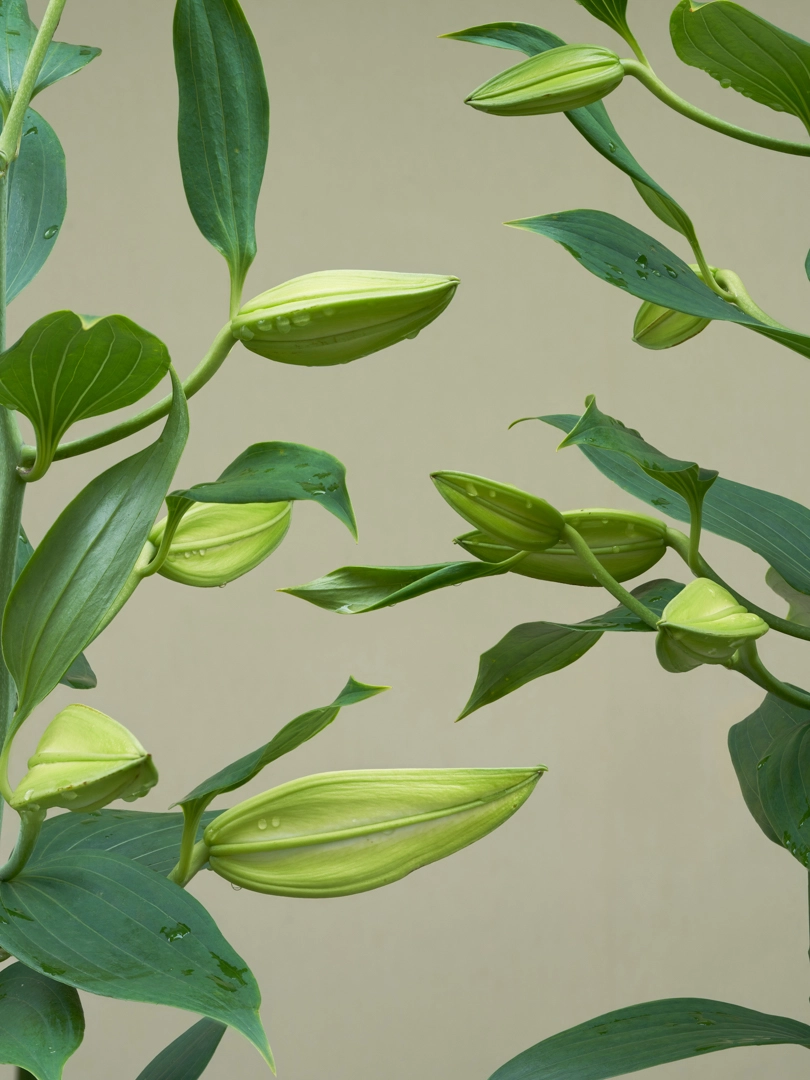
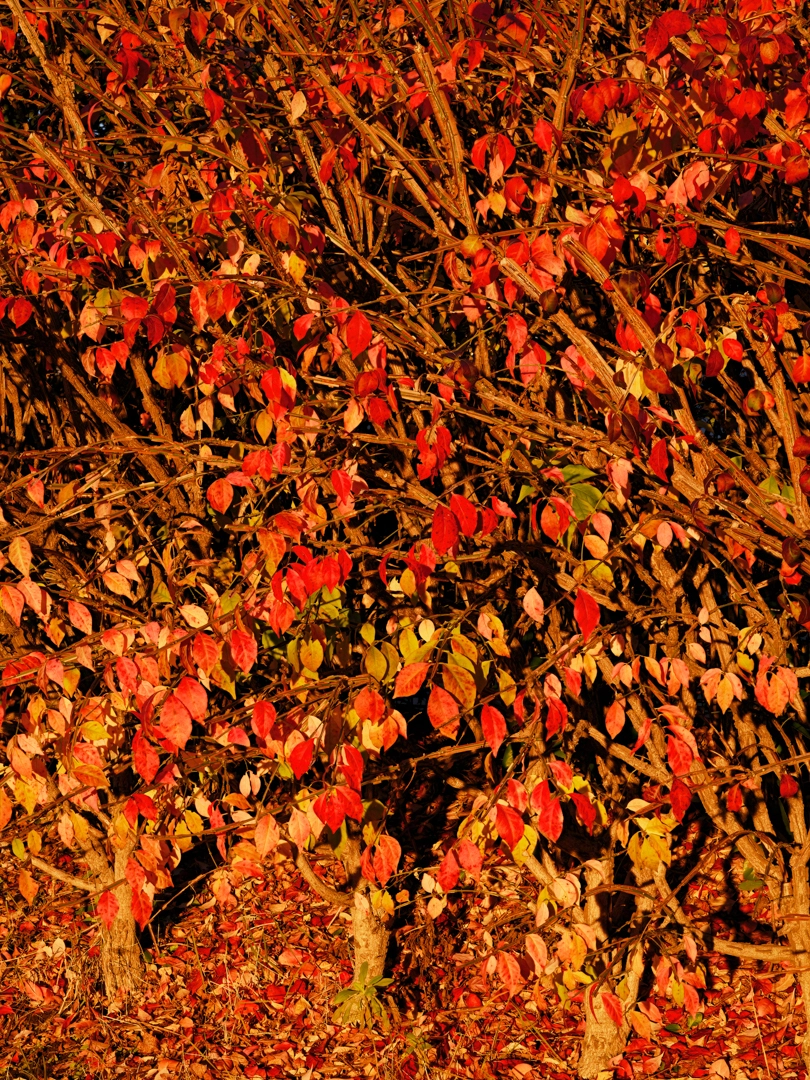
Another profound lesson emerged from my study of butterflies—metamorphosis. A larva emerges from an egg and, over time, sheds its skin to form a chrysalis, entering a state of motionless transformation. As a young insect enthusiast, I once peered inside a chrysalis, expecting to find a larva in transformation. Instead, I discovered no larva at all, but rather a black liquid that had once been the larva, now reduced to sludge. The larva had been utterly dismantled in the process. Yet, from this apparent destruction, life renews itself, using the nutrients from the sludge to give rise to a butterfly. This process, if observed by someone unfamiliar with Earth’s biology, would seem miraculous—how could the larva and butterfly be the same organism?
This cycle of destruction followed by creation was my first personal encounter with the principle of dynamic equilibrium. It also marked the beginning of my lifelong awe and respect for the intricate and resilient processes of nature.
Respect for Microorganisms:
A Key to Earth’s Survival
As we delve into the realm of the unseen, it becomes clear that our world teems with countless invisible life forms: microorganisms. Antoni van Leeuwenhoek, a 17th-century Dutch scientist from the small town of Delft, was a pioneer who first glimpsed these mysterious organisms through a homemade microscope capable of 300x magnification, revealing the bustling life in what appeared to be transparent river water.
So, what roles do microorganisms play? Essentially, microorganisms are pivotal in driving the cycles of life.

This brings us to the concept of dynamic equilibrium, where life is a continuous flow of decomposition and synthesis. Who orchestrates the major cycles on Earth? It’s the carbon atom, currently vilified amidst global warming concerns. The aim for a decarbonized society is widely discussed, yet it’s crucial to remember that humans are carbon-based beings. The real issue is not carbon itself but the disruption of the global cycle. Microorganisms transform carbon into organic matter, which is subsequently broken down into simpler forms. Thus, we ought to appreciate the efforts of microorganisms, particularly those of plant origin, for their significant role in the carbon cycle.

Moreover, microorganisms are instrumental in energy circulation. They harness sunlight, converting it into organic matter, and generously share it with other organisms. For instance, plants engage in photosynthesis beyond their own needs, offering their leaves, fruits, and roots to other life forms.
Admittedly, not all microorganisms are benign. Pathogens like cholera and dysentery bacteria pose significant threats. However, the vast majority of microorganisms are not only harmless but also beneficial to humans. The topic of intestinal bacteria has gained prominence recently. It's easy to assume they merely consume our food, but in reality, they detoxify harmful substances, transform nutrients into more accessible forms for us, and even serve as a protective barrier against external threats.
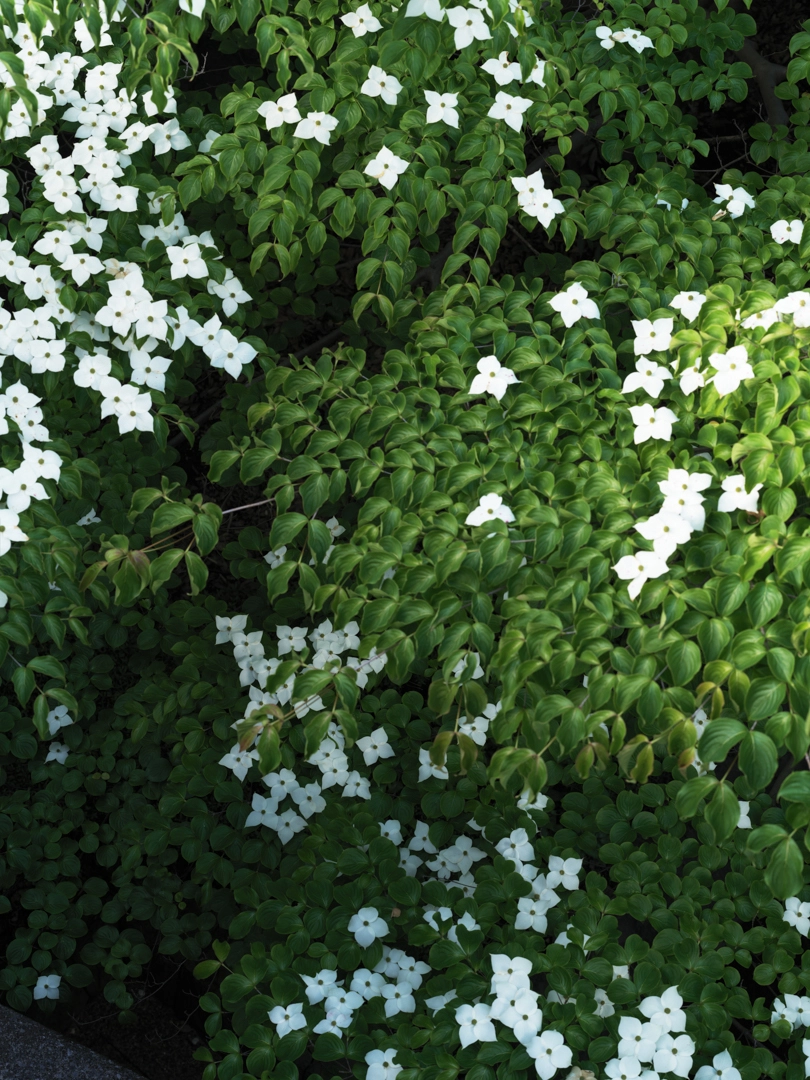

The trillions of microorganisms in our digestive system play a crucial support role. The composition of these microbial communities varies with the climate of one’s environment. For instance, Japanese individuals, who consume a considerable amount of seaweed, host numerous bacteria capable of breaking down seaweed. Recent findings also indicate that the metabolic activities of intestinal bacteria impact not just physical health but our psychological state as well, highlighting a direct link to mental health concerns.
Recoverable Cycles of Our Planet:
Call to Action in the Grand Scheme of History
In the vast tapestry of Earth’s history, cycles of change have always been recoverable. Life on Earth, with its 3.8 billion-year history, has seen dramatic environmental shifts. Oxygen once ranged from 20% to 30% in the atmosphere. Ice ages enveloped the planet in frozen expanses. Dust from asteroid impacts shrouded the world, blocking sunlight. In this darkened era, photosynthesis ceased, leading to the demise of plants, herbivores, and eventually, the mighty dinosaurs. Yet, from this brink, a new age dawned as resilient creatures like rats ushered in the era of mammals. Earth’s dynamic equilibrium persisted, adapting through turmoil.

Today’s environmental crises, however, are not natural phenomena. They are the consequences of human actions, where we have assumed dominion over the Earth’s resources. Acting selfishly instead of nurturing the cycle, we have disrupted the balance.
Human societies often prioritize selfish order within their communities, unwittingly unleashing entropy—disorder—manifested in mounting garbage and carbon dioxide emissions. While Earth can absorb some level of entropy, we have surpassed its limits. What we face today is less an energy crisis and more an entropy crisis.

Living in the Future:
Rethinking the Standard
To truly live in harmony with our planet’s ecosystems including microorganisms, we must reconsider our consumption behaviors regarding food, clothing, and shelter through the lens of entropy. Humans have disrupted the natural cycle by accumulating wealth unnecessarily. This accumulation not only puts strain on the environment but also goes against the natural order observed in other organisms. While other beings secure what they need and pass on the surplus, humans uniquely hoard wealth. This accumulation of wealth is not just about numbers; it directly impacts the global environment. Humans have exploited natural resources like oil and coal, claiming land that belongs to no one. To coexist sustainably, we must transcend individual desires and champion altruism as a political and social movement.


The Japan Pavilion at Expo 2025 Osaka, Kansai, holds immense potential to spread these crucial messages. In Japan, the concept of “yaoyorozu no kami” emphasizes that divinity resides in all places and things. This sentiment aligns with the opening lines of Hojoki (A Hermit's Hut as Metaphor), stating, “The flow of the river never ceases, and the water never stays the same. Bubbles float on the surface of pools, bursting, reforming, never lingering.” This simple expression embodies the concept of dynamic equilibrium. We must reevaluate life through the lens of nature’s constant flow, avoiding dichotomies and seeking moderate solutions within this ebb and flow. This is a unique attribute of humanity.

Humans, with their intelligence, have constructed civilizations, cities, institutions, and economies. In this journey, we’ve recognized the value of individual life, including basic human rights. Nature, on the other hand, operates on the premise of species survival above all. While our intelligence has led to the structuring of the world, we must acknowledge when it has overreached. We find ourselves at a pivotal moment where we must seek harmony with all life forms, including microorganisms.
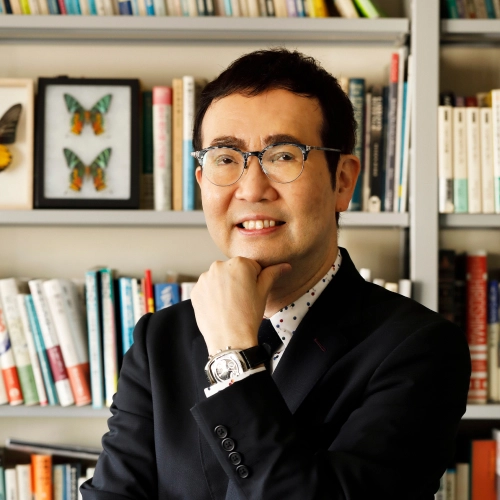
Shin-ichi Fukuoka
Born in Tokyo in 1959, Fukuoka earned his B.A. and Ph.D. from Kyoto University. After completing a traineeship at Harvard University and serving as an assistant professor at Kyoto University, he is currently a professor at Aoyama Gakuin University and visiting professor at Rockefeller University. Shin-ichi has authored a plethora of works, such as “Seibutsu to Museibutsu no Aida” and “Doteki Heiko” series, both of which scrutinize the essence of life through the lens of dynamic equilibrium theory. Fukuoka is also a devoted admirer of Vermeer, who coincidentally lived during the same era as van Leeuwenhoek, the pioneer in discovering microorganisms. It is said that Vermeer’s painting techniques may have been influenced by van Leeuwenhoek’s microscope. Additionally, Fukuoka serves as the thematic project producer for the Signature Pavilion, “Dynamic Equilibrium of Life.”
HP: https://www.fukuokashinichi.com/
Let’s Share!
Changes and replacements. Life is in the process of changes.
Share your Monthly JP pavilion and circulate your thoughts.
Related Articles

01/03
Exploring More Than 1 Kilograms of Microorganisms in the Human Intestine: A Symbiotic Relationship
Mr. Umezaki continues his research on microorganisms. The reality of the situation is “full of unknowns,” he says.
Read more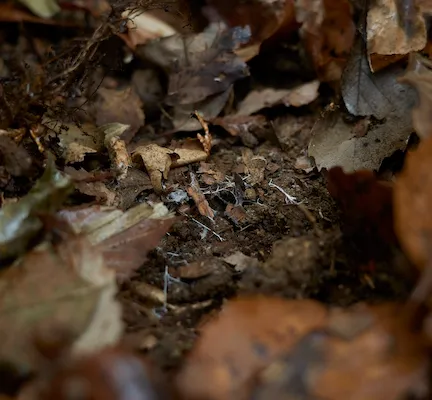
03/03
All Living Things Eat and Discharge: The Story of the “Cycle of Life” as Seen in the Food and Excretion of the Natural World
This is a story about the cycle of life that begins with "excrement," which all humans do. There were hints that would lead us to the future.
Read more